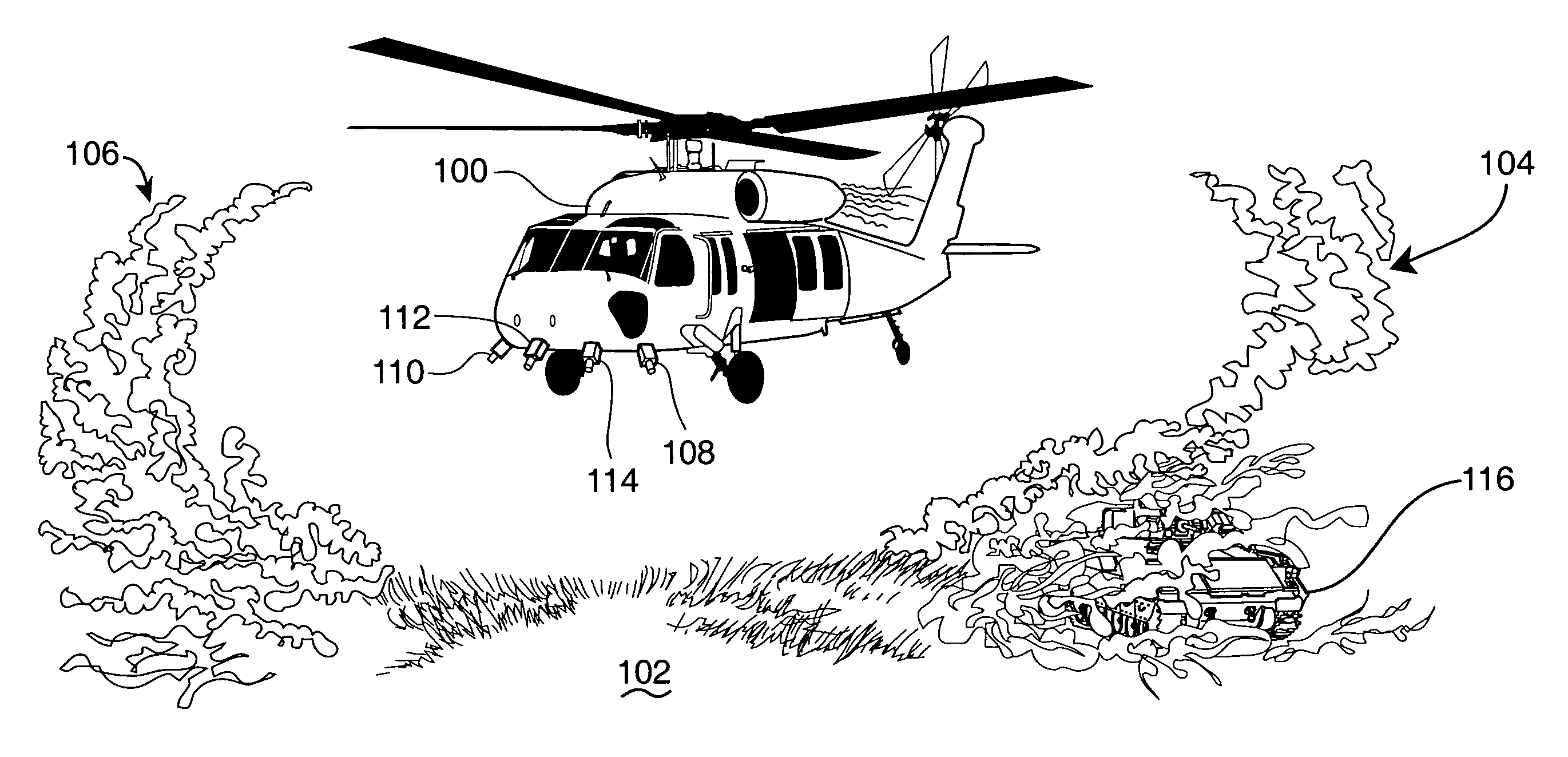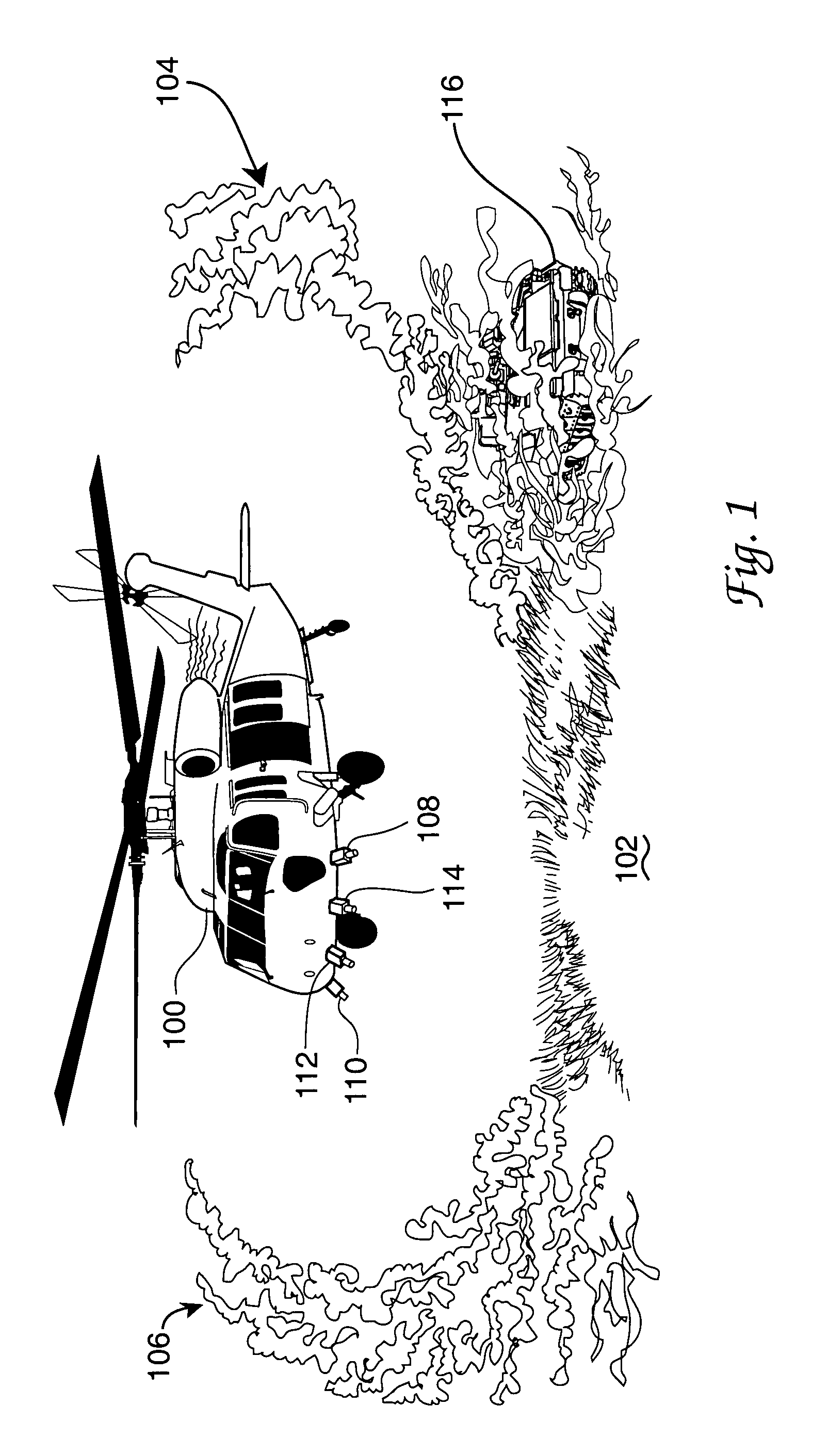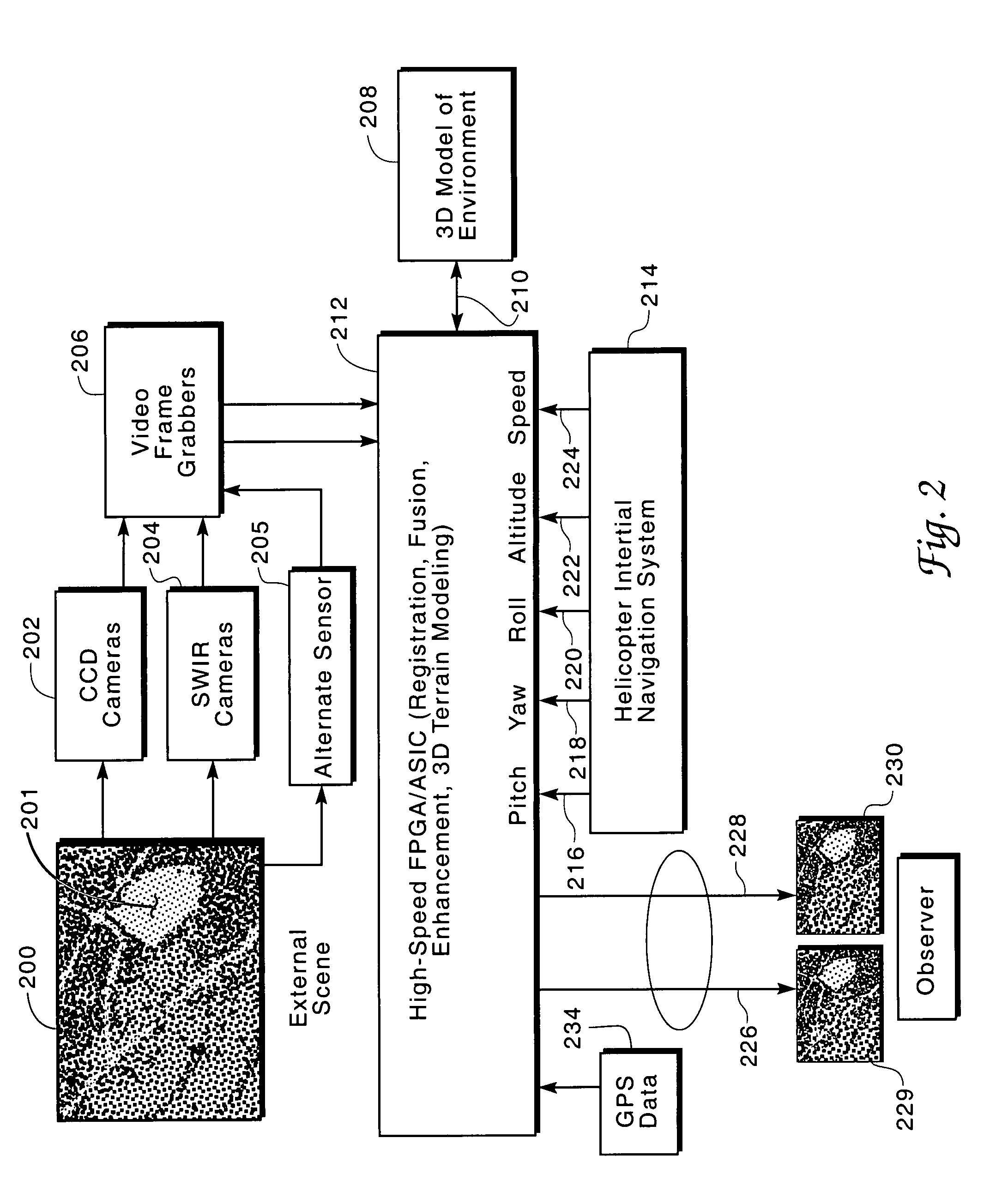Helicopter brown-out landing
a technology of helicopters and landing gear, applied in the direction of process and machine control, instruments, etc., can solve the problems of difficult observation of the final destination site of the helicopter, obscuring the pilot's vision, and affecting the appearance of vehicles, people, ground features and structures
- Summary
- Abstract
- Description
- Claims
- Application Information
AI Technical Summary
Benefits of technology
Problems solved by technology
Method used
Image
Examples
Embodiment Construction
[0035]The downdraft rotor wash of a helicopter can result in a significant safety problem when the helicopter is attempting to land on, for example, an unpaved surface in a location wherein sand or other loose earth components prevail. Current war theatres such as in Iraq, Saudi Arabia and parts of Afghanistan as well as portions of the continental United States include prime examples of these soil and earth conditions. Since the helicopter of concern is yet airborne during parts of such landing events and the open throttle coupled rotor can be as close as ten to fifteen feet from the earth's surface, it is common for significant clouds of particle-laden dust to develop around the helicopter from this rotor wash and for this dust to obscure a needed view of the landing area from the helicopter pilot. Such obscuration tends to increase as the helicopter approaches the earth and usually becomes worst at the most inopportune moment in the landing sequence, i.e., in the seconds just bef...
PUM
 Login to View More
Login to View More Abstract
Description
Claims
Application Information
 Login to View More
Login to View More - R&D
- Intellectual Property
- Life Sciences
- Materials
- Tech Scout
- Unparalleled Data Quality
- Higher Quality Content
- 60% Fewer Hallucinations
Browse by: Latest US Patents, China's latest patents, Technical Efficacy Thesaurus, Application Domain, Technology Topic, Popular Technical Reports.
© 2025 PatSnap. All rights reserved.Legal|Privacy policy|Modern Slavery Act Transparency Statement|Sitemap|About US| Contact US: help@patsnap.com



